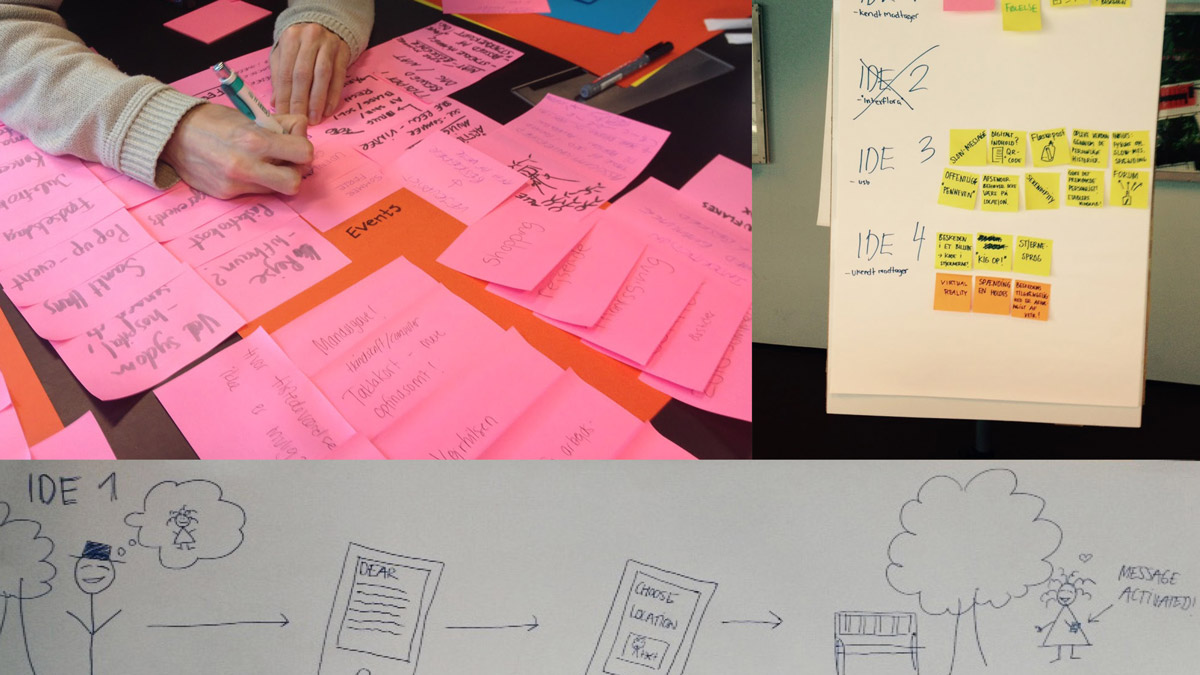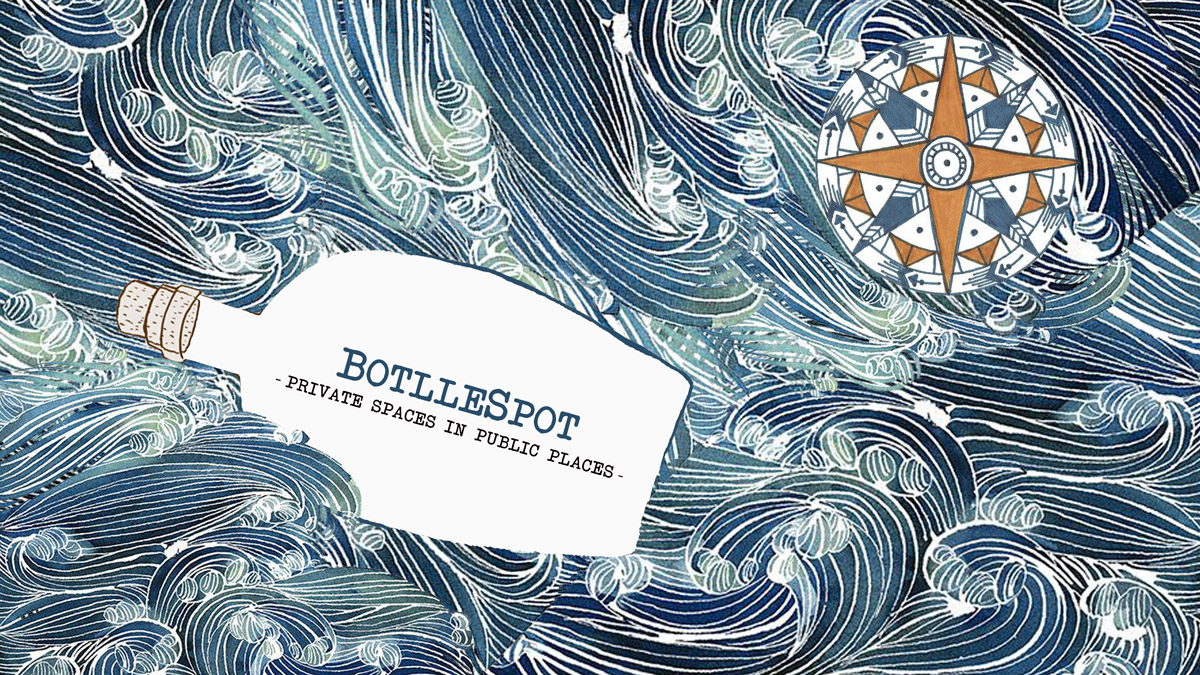BottleSpot. Private places in public spaces.
This project was developed as part of the Interaction Design course at ITU. We created a concept for a mobile application BottleSpot, which combines the elements of location and the feeling of sending a message in a bottle. The application uses GPS and the idea is that the user (sender) can leave a message at a specific location and the receiver can only receive the message when being in the exact spot.
Approach
The concept was created through three stages. In the first phase of the process, we have through different field work methods explored written communication in order to find opportunities for interaction. In the second phase, idea development and sketching techniques was used to explore these opportunities and develop three concepts. The best features from each concept was then evaluated and merged into a final concept. In the third and final stage, prototyping and user testing was used to polish and refine the concept in order to end up with a more tangible solution.


Solution
Our final design is an app named BottleSpot, which combines the elements of location and the feeling of sending a message in a bottle. Technologically, the app makes use of GPS and the logo of the app illustrates a message in a bottle. To use the app, both the sender and the receiver are required to have installed the app on their smartphone.
Based on the user tests we added the possibility of person- alising the framing of the message. When writing the message, the sender will be presented with a basic style sheet where he can choose between different paper and font styles. The mes- sages can consist of both short and long content. Depending on how much effort the sender wants to put in personalising the message, he can attach pictures, videos and music to the message.
By holding up the phone, the sender chooses a specific spot in the surroundings and places the message on a coordinate by pressing on the screen. The sender now writes and attaches the message and registreres the receiver’s phone number. The sender can set a specific radius to place the message within as well as an expiration date on the availability of the mes- sage. When the message is sent, an animation will appear on the screen showing a piece of paper being rolled together and fly inside a bottle which ends up disappearing.
Downloads & prototypes
Process report (PDF)
Involved organisations
